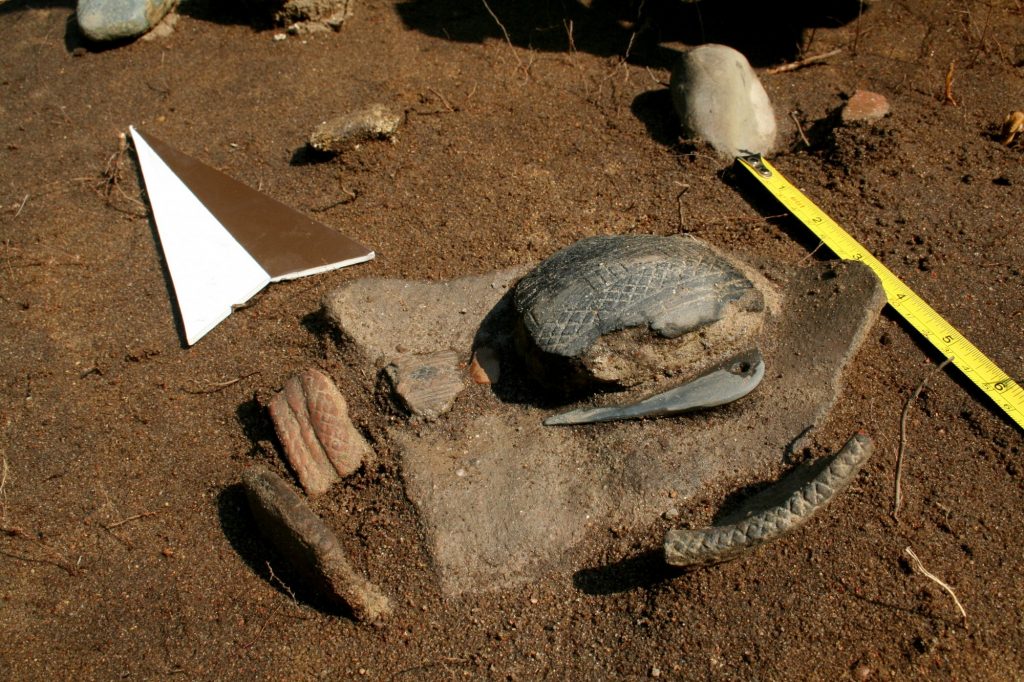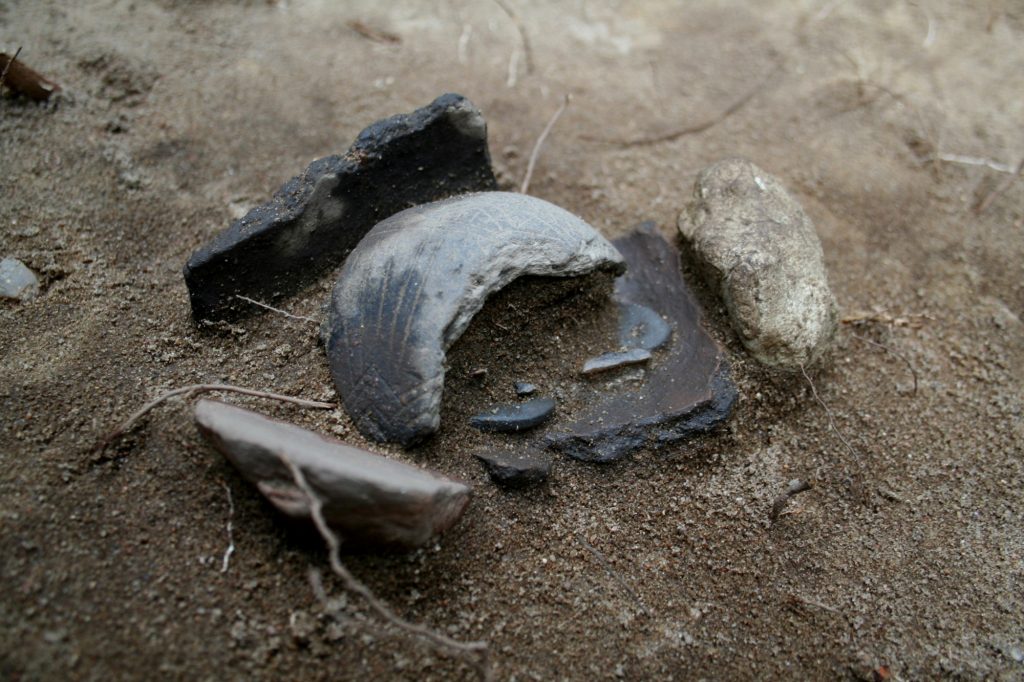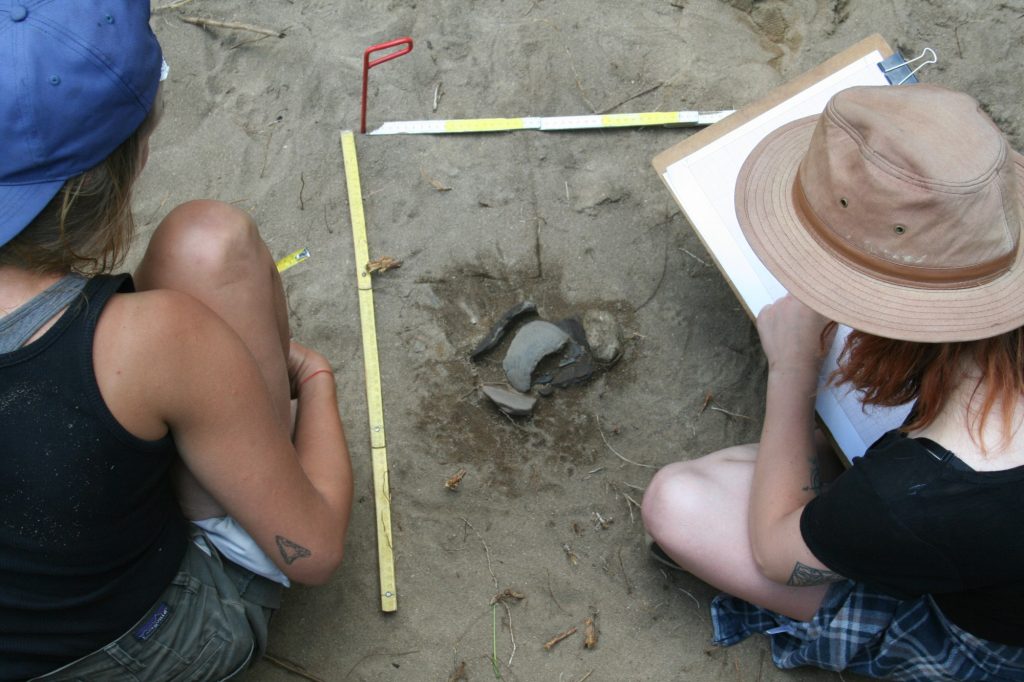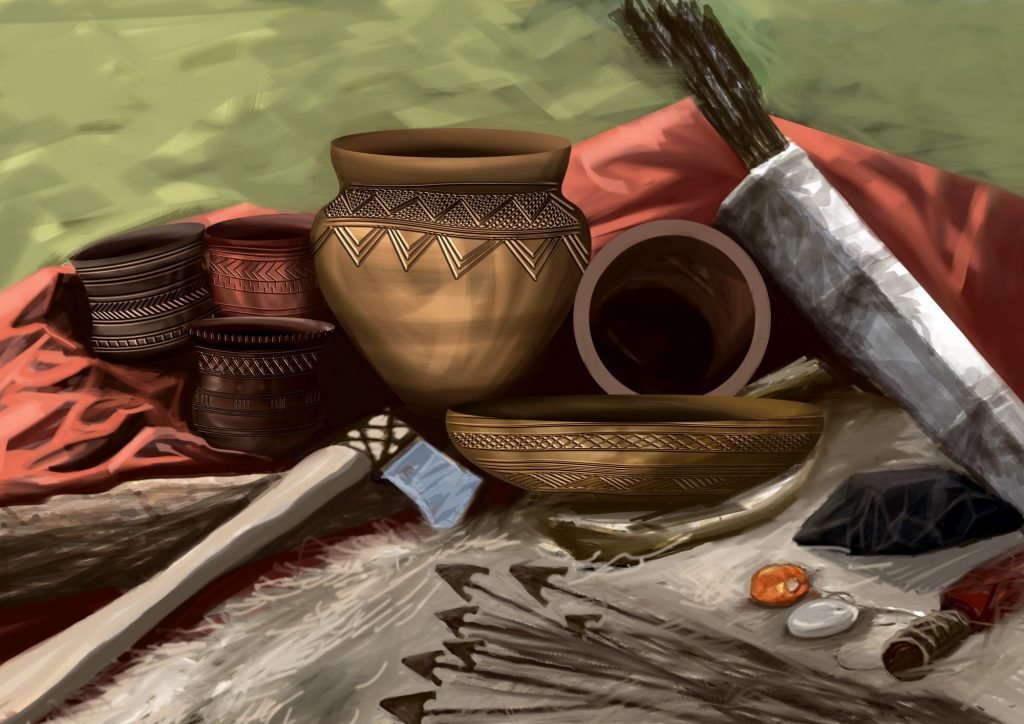In Supraśl, on the Polish-Belarusian border, unique objects of Bell Beaker communities were discovered. They might have been linked to distant regions of the Atlantic coast and the British Isles. Is it possible that the artefacts would be the traces of the Eneolithic travelers, who like Marco Polo, travelled thousands of miles in search of new, valuable and exotic raw materials and objects?

© A. Cetwińska
Discovery in Supraśl
Until recently, the eastern border of the Bell Beaker influence associated with local variants of this widespread cultural phenomenon, dated in Europe and northern Africa between 2800–1800 BC, was considered to be the Vistula River Basin, with three distinct societies in the territory of modern Poland. The presence of finds identified with the Bell Beakers was also suggested further to the east in the East European Plain. They were, however, isolated artefacts of unknown origin. Recent discoveries from the Polish-Belarusian border region evidenced the presence of new Eneolithic materials of foreign provenance. The ecofacts and artefacts from ritual features unearthed at the site of Supraśl included fragments of vessels, flint, stone and amber artefacts (in many cases highly fragmented), as well as a very few burnt human and animal bone remains. The materials contained some local and foreign cultural patterns. However, in most cases, analysis of the finds did not indicate parallels to Central European Bell Beaker varieties, but instead they showed correspondence with materials from the Atlantic coast.

© D. Marczak
Decorations from the Iberian Peninsula
The Bell Beaker contexts discovered at Supraśl contained sets of unusual objects including fine decorated pottery, elements of the archery-warrior related equipment and some foreign items. All of them had their parallels in the Bell Beaker cultural environment from different European territories, but mainly in its western regions. In several cases, however, there are items that have no analogues and are therefore unique.
The strongest parallels to the western Bell Beakers varieties are found in the pottery. The features revealed fragments of vessels from beakers, bowls and storage vessels, made in the Ciempozuelos style – typical of the Iberian Peninsula, and the chemical analyses showed that they were used for drinking and eating. Such vessels are characterized by geometric decoration made by incision or stamping. The motifs include lines around the circumference of the vessel, diagonal criss-cross patterns, zigzags, bands of short diagonal lines, sometimes arranged in a herringbone pattern, triangles filled with short lines and concentric triangles, as well as groups of short vertical lines.

© A. Cetwińska
Archer-Warrior’s Equipment
Additionally, the features contained 25 flint arrowheads in total, most of which had a semi-circular notch at the base, an attribute typical for Central European contexts. Aside from these small flint archery items, the contexts contained other warrior-archery related tools such as two single-element arrow shaft straighteners and four fully polished stone knives and daggers. Two of them were well preserved, while the others were probably deliberately destroyed and deposited in fragments. They all were characterized by their very good quality, particularly their accuracy of shaping.

© A.Cetwińska
Unique items
Among the artefacts there were also objects not otherwise found in north-eastern Poland, or even Central European contexts more generally. Apart from the specific pottery and particular archery-related items, these artefacts include amber and stone jewellery. The features contained eight artefacts made of succinite (Baltic amber), seven of which are fragments of six different cylindrical beads and a nodular one with a V-shaped hole, and the eighth one is a trapezoidal pendant. Cylindrical amber beads are known from the Bell Beaker contexts, but their territorial range is basically limited to the British Isles. The trapezoidal pendant finds parallels in the local eastern Baltic cultural environment. The group of pendants also includes two other artefacts made from different raw materials. One of them is a mudstone pebble turned into jewellery by drilling a piercing in it. The other is an oval plaquette-like form made of slate. Interestingly, this type of artefact is known only from the Iberian Peninsula and neighbouring areas, and the ornaments covering it also have their counterparts in pottery.
The Bell Beaker cultural package
Although the Bell Beaker phenomenon has been researched since the 19th century, it has not been established whether its pan-European range resulted from human migration or the diffusion of ideas between different groups. Occasionally, however, finds that may indicate such processes are discovered. This seems to be the situation in Supraśl, which can be interpreted as the remains of the residence of a mobile group representing the cultural model of the Bell Beakers, identified as a package of specific objects and behaviours. Members of this community have for years been associated with carrying out active migratory activity, the nature of which has not yet been fully understood. Of particular note here is the recently discovered burial of the Amesbury Archer at a relatively short distance from Stonehenge. Isotopic studies have shown that he probably came to the area from Central Europe.
In Supraśl, however, the situation is not so explicit. Taking into account all the eco- and artefacts found in the features discovered there, it is difficult to recognise their definite provenance. Here, there are both types of items – those associated with the Bell Beakers, as well as (although not very numerous) artefacts typical of the local communities of north-eastern Poland. However, there is no evidence that they found their way there as a result of diffusion “from neighbour to neighbour”. The discovery in Supraśl represents most probably traces of a group of people representing the cultural package of the Bell Beakers, which arrived here from as far west as Europe. Along with their unusual behaviour, they also brought with them sets of characteristic objects.

© A. Wawrusiewicz
Eneolithic travellers
A group of people representing the cultural package of the Bell Beakers probably began their journey in the Iberian Peninsula, which is suggested by the pottery of the Ciempozuelos style and the decorated slate plaquette/pendant. Further on, the route would probably run across the La Manche area, Jutland and the Baltic Sea to its south-eastern coastal regions. The route then ran across the Masurian Lake District to North Podlachia (where Supraśl is situated), and perhaps even further east. The objective of such Marco Polo-like long distance Eneolithic travel remains a mystery. Considering the significant amber resources available along the Baltic Sea and the amber workshops functioning here, as well as the flint mines located in the western part of Belarus (in the vicinity of Krasne Selo), it can be assumed that this was a prospecting expedition, which aim was to forge new communication and trade routes. However, regardless of its character and the chosen azimuth, it should be assumed that the presence of people who arrived in the region of north-eastern Poland had a significant impact on the cultural transformations of the Late Neolithic occurring in this area. They probably resulted in the formation of a local variant of the Trzciniec culture in the Early Bronze Age. The new phenomenon dominated large areas of Central Europe until almost the 1st millennium BC.

Reconstruction by Przemek Krall ©
Further reading:
This article may be freely reprinted without photographs, with reference to the source
Authors: Aleksandra Cetwińska, Dariusz Manasterski
About the authors:
Aleksandra Cetwińska – PhD candidate at the Antiquity of Southeastern Europe Research Centre, University of Warsaw
Dariusz Manasterski – assistant professor at the Department of Stone Age, Faculty of Archaeology, University of Warsaw, Warsaw, PL
Proofreading: Stephanie Aulsebrook

One Reply to “Eneolithic travelers of the Bell Beakers in north-eastern Poland”